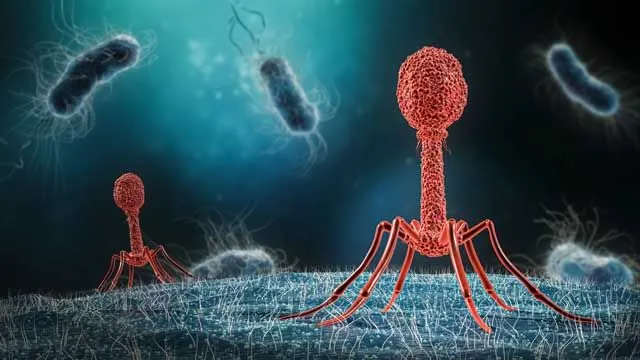
Bacteria Unveil Nature's Smart Defense: Using Dormant Viruses to Build Immunity!
2025-03-24
Author: Arjun
Introduction
In a fascinating twist reminiscent of human vaccination techniques, scientists have discovered that bacteria utilize dormant bacteriophages—viruses that infect bacteria—to strengthen their defenses against future viral invasions. This groundbreaking research from Johns Hopkins Medicine delves deep into how single-celled organisms withstand the threats posed by these phage invaders, further bridging the gap between microbial and human immunity.
Understanding Bacteriophages
Bacteriophages, often referred to simply as phages, can effectively be described as "bacteria-eaters." They are categorized into two classes: lytic phages, which cause immediate cell destruction, and temperate phages, which can either kill the host cell or enter a dormant state. The latter has become the focal point of this study as researchers found that *Streptococcus pyogenes*, the bacterium responsible for strep throat, harbors the clever ability to capture genetic material from these dormant phages, effectively "vaccinating" themselves against potential infections.
Research Findings
The crucial research, partially funded by the National Institutes of Health, was documented in *Cell Host & Microbe*. It highlights how *S. pyogenes* seizes genetic sequences from temperate phages during their non-threatening dormancy phase. This genetic material is then integrated into the bacterial genome, creating a biological “memory” that is passed to progeny. As a result, the entire bacterial population becomes equipped to recognize and combat these phages upon subsequent encounters, acting much like an immune response developed through vaccination in higher organisms.
Significance of the Study
Joshua Modell, Ph.D., associate professor at Johns Hopkins, emphasizes this study's significance, stating, "Our goal was to understand how bacteria can outlast phage attacks long enough to adapt their defenses." The CRISPR-Cas system, renowned for its DNA-breaking capabilities, plays a pivotal role in this process. It particularly excels in targeting and dismantling viral DNA that matches previously captured memories, showcasing a sophisticated form of biological documentation.
Experimental Process
During the experiments, researchers exposed bacterial populations to both naturally occurring dormant phages and genetically engineered, active ones. According to the findings, bacteria thrived more successfully when using genetic material from naturally dormant phages, demonstrating a robust immune response. In contrast, phages that could not enter dormancy resulted in diminished success in utilizing the CRISPR-Cas system.
Genomic Insights
After allowing the surviving bacteria to repopulate, scientists utilized genome sequencing to reveal an impressive catalog of new DNA memories—an arsenal of biological information that enhances the bacteria's immunity. These experiments yielded fascinating correlations that could provide insights into antibiotic resistance—one of the most pressing issues in modern medicine today.
Future Implications
Nicholas Keith, a graduate student and lead author, notes, "This mechanism is strikingly similar to how vaccines operate by utilizing attenuated viruses." This research opens new avenues to explore how CRISPR systems interact with various phage types, particularly those that do not undergo dormancy.
Conclusion
As we look to the future, models and learning from these experiments can provide vital information for developing phage therapies that target antibiotic-resistant infections. With antibiotic resistance on the rise, understanding bacterial immunity mechanisms will be essential for innovating treatments that effectively combat these stubborn pathogens.
Stay tuned as we continue to uncover the secrets of bacterial warfare! Could these findings hold the key to battling antibiotic resistance? Only time will tell!


 Brasil (PT)
Brasil (PT)
 Canada (EN)
Canada (EN)
 Chile (ES)
Chile (ES)
 Česko (CS)
Česko (CS)
 대한민국 (KO)
대한민국 (KO)
 España (ES)
España (ES)
 France (FR)
France (FR)
 Hong Kong (EN)
Hong Kong (EN)
 Italia (IT)
Italia (IT)
 日本 (JA)
日本 (JA)
 Magyarország (HU)
Magyarország (HU)
 Norge (NO)
Norge (NO)
 Polska (PL)
Polska (PL)
 Schweiz (DE)
Schweiz (DE)
 Singapore (EN)
Singapore (EN)
 Sverige (SV)
Sverige (SV)
 Suomi (FI)
Suomi (FI)
 Türkiye (TR)
Türkiye (TR)
 الإمارات العربية المتحدة (AR)
الإمارات العربية المتحدة (AR)